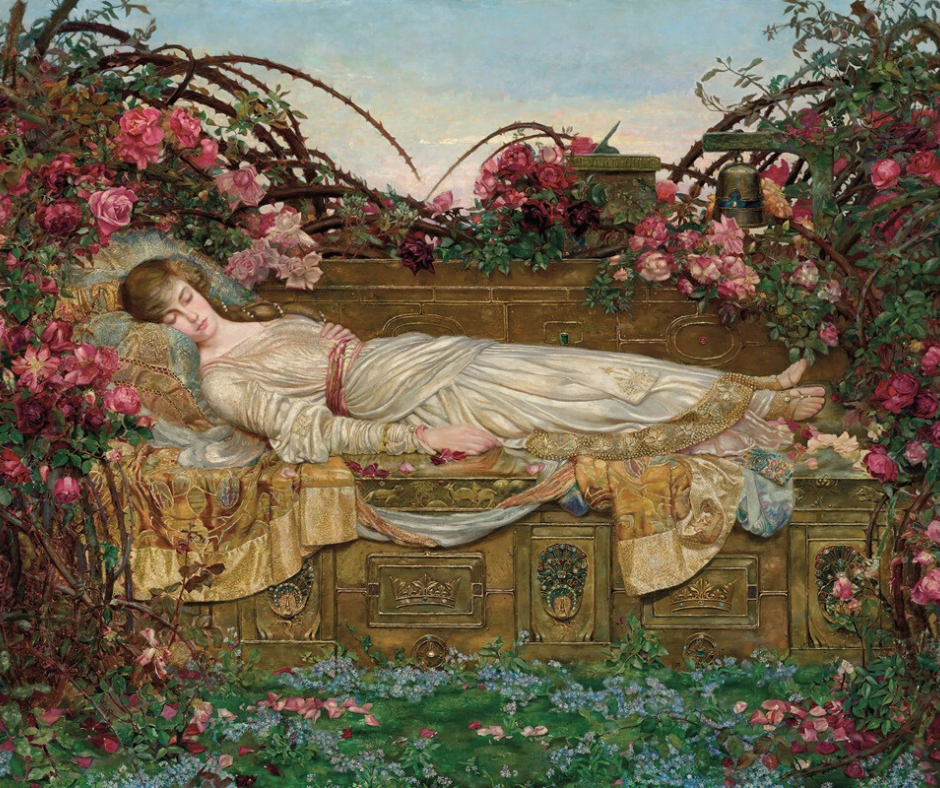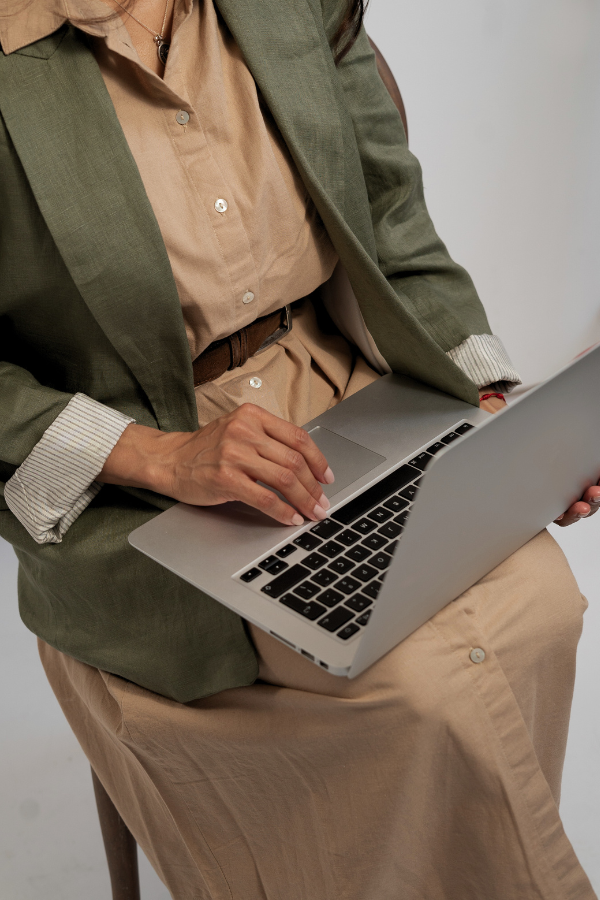
Human Creativity x Machine Learning: Which Artists Are Using AI and Why?
Summary
Reflection Questions
- How do you think the integration of artificial intelligence in art challenges traditional notions of creativity and authorship?
- In what ways do the works of these artists provoke a reevaluation of the relationship between technology and society?
- Reflect on the ethical implications of AI in art. What considerations should artists keep in mind when creating with or about AI?
- How does the use of AI in art influence your perception of the future of human and machine collaboration? Do you see it as predominantly positive, negative, or a complex mix?
- Consider the role of the audience in interacting with AI-driven art. How does this interaction transform the experience and interpretation of the artwork?
Journal Prompt
Imagine you are attending an exhibition featuring the works of Stephanie Dinkins, Refik Anadol, Sougwen Chung, Hito Steyerl, Ian Cheng, Lauren Lee McCarthy, and Anna Ridler. As you move from piece to piece, experiencing the diverse ways these artists incorporate AI into their art, reflect on your emotional and intellectual reactions. Write about how each work challenges or reinforces your views on technology, creativity, and humanity. Conclude by contemplating the role of art in mediating our understanding and acceptance of artificial intelligence in our lives.
While many artists balk at the idea of using AI art generators, others have chosen to integrate AI technologies into their creative process. Stephanie Dinkins, Sougwen Chung, and Hito Steyerl are just a select few of the many female artists using AI to make controversial statements and challenge our views. Their work, ranging from immersive installations and dynamic simulations to deeply personal narratives and critical commentaries on societal issues, not only redefines the possibilities of artistic creation but also prompts us to question the role of technology in our lives. Through their pioneering efforts, these artists invite us on a journey to explore the complex interplay between human creativity and machine intelligence, challenging our perceptions of art, technology, and the future. Read on to learn about each of these AI artists.
These Artists Are Using Artificial Intelligence to Expand Their Impact on the Art World
Stephanie Dinkins
Stephanie Dinkins is a transdisciplinary artist and educator known for her work in the intersection of technology, race, and storytelling, with a particular focus on artificial intelligence (AI). Her art practice involves creating platforms for dialogue about AI as it relates to race, gender, aging, and our future histories. Dinkins holds a unique position in the field of art and technology, emphasizing the importance of creating inclusive and equitable AI systems that reflect the diversity of human experiences, especially those of historically marginalized communities.
The visiting artist often refers to her work as “embodied AI.” Dinkins’s practice is deeply engaged with creating AI that emphasizes inclusivity, ethics, and understanding, aiming to foster intimate conversations and interactions between humans and machines.
Dinkins is a professor at Stony Brook University, where she teaches in the Department of Art. She has an MFA from the Maryland Institute College of Art and has been a fellow at Data & Society, a research institute focused on social, cultural, and ethical issues arising from data-centric technological development. Her work often explores the potential of AI to foster deep, meaningful connections and to serve as a tool for social change.
Dinkins as an AI Artist
One of her well-known projects is “Not The Only One” (N’TOO), which is described as a multi-generational memoir of one black American family told from the perspective of an AI. N’TOO is designed to learn and evolve through conversations, aiming to become an entity that can tell family stories from a first-person perspective. This project highlights Dinkins’s interest in the possibility of creating AI that can carry and convey the nuanced complexities of individual and collective stories, particularly those that are underrepresented in mainstream narratives.
Dinkins’s work raises critical questions about who has the power to shape AI and for what purposes. She advocates for a more community-centered approach to AI development, one that actively involves diverse groups of people in the creation and training of AI systems. By doing so, she argues, technology can better serve society’s needs and reflect its true diversity.
Her projects have been exhibited internationally at prestigious venues such as the Studio Museum in Harlem, the Metropolitan Museum of Art, and the Victoria and Albert Museum. Through her art and advocacy, Stephanie Dinkins invites us to imagine a future where AI supports all aspects of human dignity and creativity, and where technology amplifies equity rather than exacerbating inequalities.
Refik Anadol
Next on our list of AI artists is Refik Anadol—a pioneering figure in the intersection of art and AI technology, widely recognized for his breathtaking installations that integrate deep learning, data analytics, and immersive environments. Born in Istanbul, Turkey, Anadol’s work explores the space between physical and virtual realms, creating a hybrid form of media that he describes as a speculative form of architecture.
Anadol’s AI artworks often use large-scale projections, digital screens, and architectural interventions to transform public and private spaces into dynamic, living art pieces. His art is not just visually stunning; it delves deep into the relationship between technology and human perception, questioning and expanding the possibilities of digital and physical worlds merging.
Key Themes and Works
Data Aesthetics
Anadol utilizes data as his primary material, transforming it into captivating visual experiences. Through algorithms and AI, he interprets vast datasets from various sources—ranging from urban cityscapes to human memories—into vibrant, fluid artworks that reveal the hidden patterns and stories within the data.
Machine Learning and AI Generated Art
A significant aspect of Anadol’s work involves the use of machine learning algorithms to generate new aesthetic forms and narratives. Projects like “Machine Hallucination” and “Wind of Boston: Data Paintings” showcase his ability to harness AI generative art not just as a tool but as a collaborator in the creative process, producing mesmerizing, ever-changing visuals based on data inputs.
Immersive Environments
Anadol’s installations often envelop viewers in a digital landscape, creating immersive experiences that challenge the boundaries between the physical and the virtual. His work “Infinity Room” is an example of this, offering participants a sense of boundlessness and altering their perception of space through mirrored walls and digital projections.
Public Art and Architecture
Many of Anadol’s projects are large-scale and sited in public spaces, such as the façade of the Walt Disney Concert Hall in Los Angeles. These works not only transform architectural surfaces into dynamic canvases but also invite community engagement, making art accessible to a wider audience.
Exploration of Memory and Dreams
Anadol is interested in the concept of collective memory and dreams, using AI to visualize these intangible aspects of human experience. His project “WDCH Dreams” involved mapping the digital archives of the Los Angeles Philharmonic onto the building’s exterior, creating a visual narrative that blended history, data, and architecture.
Sougwen Chung
Sougwen Chung is an interdisciplinary artist whose work explores the dynamics between humans and systems, particularly focusing on the relationship between hand-drawn art and computer-generated designs. Chung’s practice encompasses drawing, painting, installation, sculpture, and performance. In her own drawing practice, Chung places a significant emphasis on the collaboration between human creativity and artificial intelligence (AI). Her innovative approach to art has positioned her at the forefront of discussions about the future of creativity and machine collaboration.
Born in Canada and raised in Hong Kong, Chung studied at the University of Toronto and later at the Massachusetts Institute of Technology (MIT) Media Lab. Her multicultural background and education have informed her unique perspective on art and technology, blending eastern and western philosophies and aesthetics.
Her art has been recognized and exhibited worldwide, including at prestigious venues such as the Museum of Modern Art (MoMA) in New York, the Victoria and Albert Museum in London, and the National Art Center in Tokyo. Chung’s contributions to art and technology have also earned her numerous awards and residencies, further highlighting her role as a pioneer in exploring the intersection of art, technology, and AI.
Sougwen Chung’s work challenges us to reconsider our perceptions of art, technology, and collaboration. Through her exploration of human-machine collaboration, Chung not only pushes the boundaries of artistic expression but also prompts deeper reflections on the future role of AI in creative processes and its implications for society at large.
Notable Projects and Concepts
One of Chung’s most notable projects is “Drawing Operations Unit Generation (DOUG),” in which she interacts with a robotic arm in a live performance. The project explores the idea of co-creation with AI algorithms and art software, where Chung and the robot draw together, blurring the lines between the creator and the tool. This collaboration generates a dialogue not just about the act of drawing, but also about the nature of artistic creativity and how it can be augmented or transformed through technology.
The Chinese Canadian artist is interested in the concept of “Shared Agency” between human and machine, questioning traditional notions of authorship and creativity. Her work suggests a future where humans and AI collaborate closely, each influencing and enhancing the other’s output in ways that could not be achieved independently.
Hito Steyerl
Hito Steyerl is a German filmmaker, visual artist, writer, and innovator in the field of documentary film and media art, known for her critical approach to the proliferation of digital media and its impact on society. Her work explores themes such as globalization, feminism, surveillance, and the influence of technology on our daily lives. Steyerl’s art is characterized by a unique blend of theoretical analysis, political critique, and humor, offering profound insights into the complexities of the digital age.
Born in 1966 in Munich, Germany, Steyerl studied cinematography and documentary filmmaking at the Academy of Visual Arts in Tokyo and the University of Television and Film Munich, followed by a doctorate in philosophy from the Academy of Fine Arts Vienna. Her diverse background has contributed to her multidisciplinary approach, which spans video, digital media, photography, and written essays.
Steyerl’s work often addresses the way digital images are produced, distributed, and consumed, particularly in relation to power structures and global capitalism. She is interested in how digital technologies affect and transform society, politics, and personal identity. Her projects frequently investigate the intersection of art and activism, suggesting that images and media have the potential to challenge or reinforce societal norms and values.
Notable Projects and Themes
One of her notable works, “How Not to Be Seen: A F***ing Didactic Educational .MOV File” (2013), is a satirical video that functions as an instructional piece on how to avoid being seen in a world dominated by surveillance and data collection. Through a blend of humor and critical analysis, Steyerl examines the strategies of visibility and invisibility in the digital era.
Another significant project, “Factory of the Sun” (2015), is an immersive video installation that critiques labor, surveillance, and the corporatization of the virtual world. The work combines narrative elements with interactive environments, engaging viewers in a critical dialogue about the digital economy and its impact on human lives.
Steyerl has also contributed significantly to the discourse on contemporary art and media through her writing. Her essays, such as “In Defense of the Poor Image” and “Duty-Free Art,” are influential texts that explore the ethics, aesthetics, and politics of digital media and art in a globalized world.
Hito Steyerl’s art and thought reflect a deep engagement with the pressing issues of our time, making her a key figure in contemporary art and theory. Through her pioneering use of video and digital technology, Steyerl continues to challenge and expand the boundaries of visual culture, inviting viewers to reconsider their relationship with the media-saturated world around them.
Ian Cheng
Ian Cheng is an American artist known for his innovative use of artificial intelligence (AI) to create immersive, evolving digital simulations and environments. Born in 1984, Cheng’s background in cognitive science and visual arts—having studied at both the University of California, Berkeley, and Columbia University—has significantly influenced his approach to art, blending interests in technology, biology, consciousness, and systems of evolution.
Cheng’s work is characterized by its exploration of the concept of “live simulation,” which involves creating virtual ecosystems inhabited by characters and elements programmed with basic sets of rules that allow them to evolve over time without a predetermined outcome. This approach results in dynamic artworks that change and grow, offering new experiences and interpretations with each viewing. Cheng refers to these simulations as a form of “embodied AI,” emphasizing the way they manifest complex, lifelike behaviors and interactions within digital spaces.
Notable Projects and Themes
One of Cheng’s most notable series, “Emissaries” (2015-2017), is a trilogy of live simulation works that narrate the story of an ecosystem’s evolution through the lens of cognitive evolution. Each piece in the series is set in a different environment and features a cast of characters and agents interacting in unpredictable ways, driven by their programming. The series invites viewers to reflect on themes of adaptation, social dynamics, and the interplay between order and chaos.
Cheng’s art is not just visually engaging; it also poses deep philosophical questions about the nature of existence, intelligence, and the potential futures of life, both organic and artificial. By leveraging AI and simulation technology, Cheng creates spaces where viewers can observe and contemplate the complexities of systems that mimic life itself.
Beyond “Emissaries,” Cheng has continued to push the boundaries of digital art and AI. His works have been exhibited in prestigious venues worldwide, including the Museum of Modern Art in New York, the Serpentine Galleries in London, and the Fondazione Sandretto Re Rebaudengo in Turin, Italy. Cheng’s contributions to contemporary art offer a glimpse into the potential of AI as a medium for exploring the depths of human and non-human consciousness, making him a pivotal figure in the intersection of art, technology, and science.
Lauren Lee McCarthy
Lauren Lee McCarthy is an American artist, educator, and programmer who explores the intersections of technology, society, and human relationships through her work. McCarthy’s art often focuses on surveillance, social interaction, and the role of artificial intelligence (AI) in mediating and shaping human experiences. Through interactive installations, performances, and digital projects, she critically examines how technology influences our behavior, relationships, and understanding of privacy and intimacy in the digital age.
McCarthy holds a Bachelor of Science in Computer Science and a Master of Fine Arts from the UCLA Design Media Arts program. Her dual background in technology and art allows her to create works that are not only conceptually engaging but also technically sophisticated.
Notable Projects and Themes
One of McCarthy’s notable projects is “LAUREN,” where she transforms herself into a human version of a smart home assistant, similar to Amazon’s Alexa or Google Home, but with a deeply personal touch. For several days, McCarthy remotely controls the homes of participating volunteers, managing lights, appliances, and even offering conversation and advice, exploring the dynamics of convenience versus privacy, and the trust we place in AI systems to manage our personal spaces and lives.
Another significant work is “SOMEONE,” which flips the concept of surveillance on its head. Participants volunteer to have their homes live-streamed publicly, allowing online viewers to control aspects of their environment, such as lights and music. This project probes the limits of privacy, consent, and the human desire for connection in a world where surveillance has become normalized.
McCarthy’s work “Follower” involves participants being followed by a stranger for a day, without knowing who or when. This piece delves into the nuanced feelings of being watched and the human need for attention, in contrast with the discomfort and invasion of privacy that comes with surveillance.
Through her innovative and thought-provoking projects, Lauren Lee McCarthy raises critical questions about the ethics of technology, the nature of human interaction in a digitally mediated world, and the evolving definitions of public and private spaces. Her work has been recognized and showcased internationally, reflecting her significant impact on the discourse around technology and society.
McCarthy also contributes to the broader artistic and tech communities through teaching and speaking engagements, sharing her insights and fostering discussions about the role of technology in our lives. She serves as an associate professor at UCLA in the Design Media Arts department, where she continues to inspire students and peers alike with her critical and creative approach to technology and art.
Anna Ridler
Anna Ridler is a British artist and researcher known for her innovative work at the intersection of art, technology, and data, with a particular focus on artificial intelligence (AI) and machine learning. Her practice encompasses a wide range of mediums including drawing, video, installation, and photography, but she is especially recognized for her ability to blend these traditional forms with cutting-edge technologies to explore themes of nature, finance, and the subjective nature of data.
Ridler has a background that uniquely combines the arts and humanities with technology. She holds a Bachelor’s degree in English Literature from the University of Oxford and a Master of Arts from the Royal College of Art, where she specialized in Information Experience Design. This blend of disciplines is evident in her work, which often revolves around the creation of datasets as a form of storytelling and the interrogation of the biases inherent in AI technologies.
Notable Projects and Themes
One of Ridler’s most notable projects is “Mosaic Virus,” which uses machine learning to generate tulip blooms that are affected by the Bitcoin market. The project draws parallels between the speculative nature of the cryptocurrency market and the historical tulip mania of the 17th century, highlighting the human propensity for assigning value to objects in ways that are both arbitrary and deeply subjective. For this project, Ridler created a dataset of thousands of photographs of tulips, which she then used to train a generative adversarial network (GAN) to produce new, unique tulip images that change in response to fluctuations in the Bitcoin market.
Another significant work by Ridler is “Myriad (Tulips),” which similarly involves a dataset of tulip photographs. This project explores themes of classification and the act of observation, focusing on how the categorization of information can shape our perception of the world.
Ridler’s work is deeply research-oriented, often involving extensive data collection and experimentation with machine learning models to question and critique the use and impact of AI in society. Through her art, she examines the complexities of data as a material: how it can be interpreted, the biases it carries, and its potential to tell stories or reveal hidden narratives.
Final Thoughts on AI Art
Each artist listed above has chosen to harness the power of AI to explore new frontiers of expression, identity, and human connection, offering a glimpse into a future where technology and art coalesce to reflect and shape our realities. Their work not only exemplifies the limitless potential of combining human ingenuity with machine intelligence but also serves as a critical lens through which we can examine the ethical, social, and cultural implications of our increasingly digitized world.








